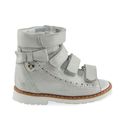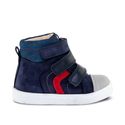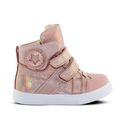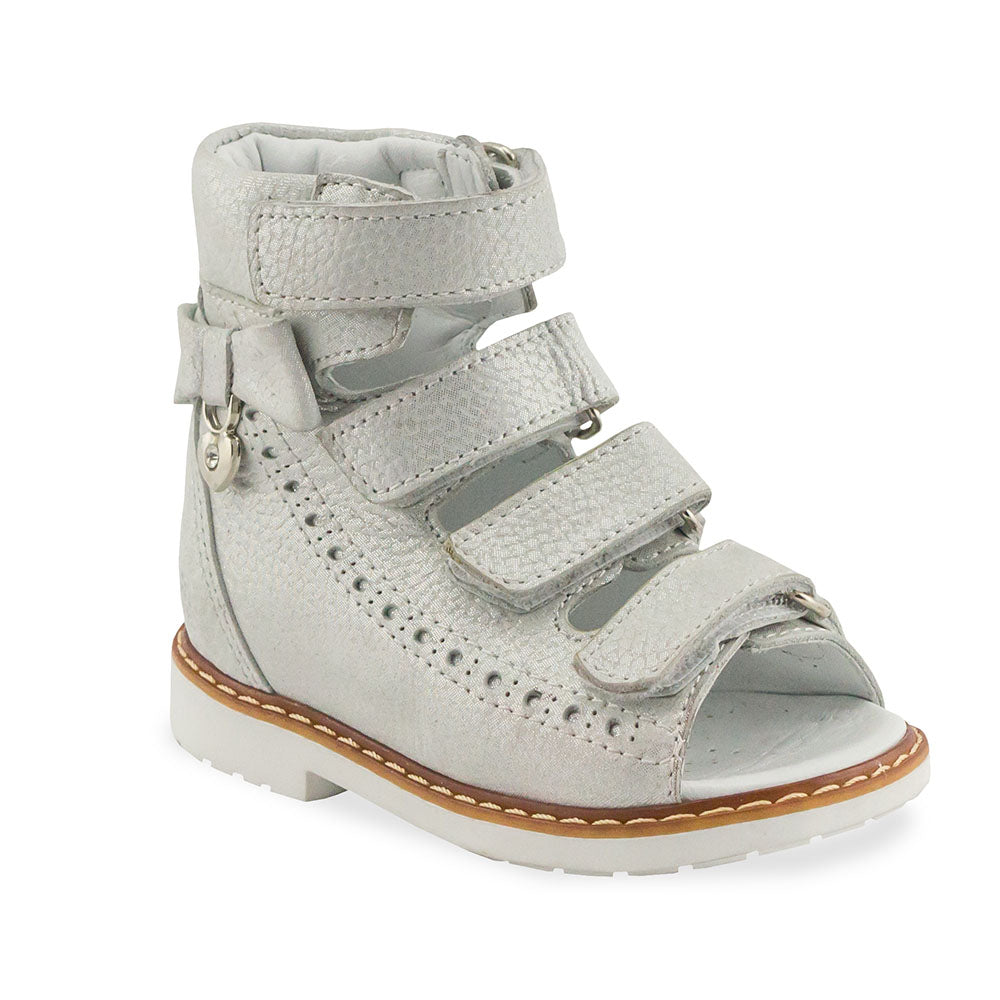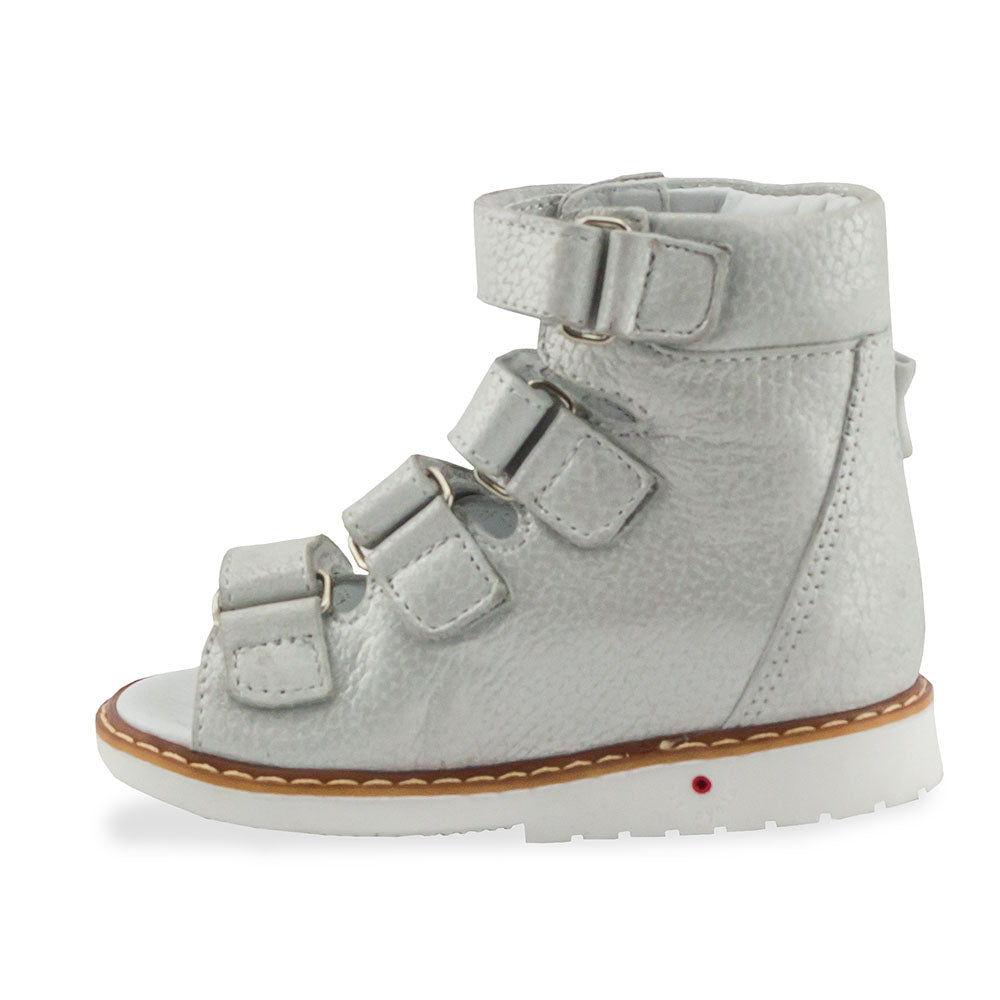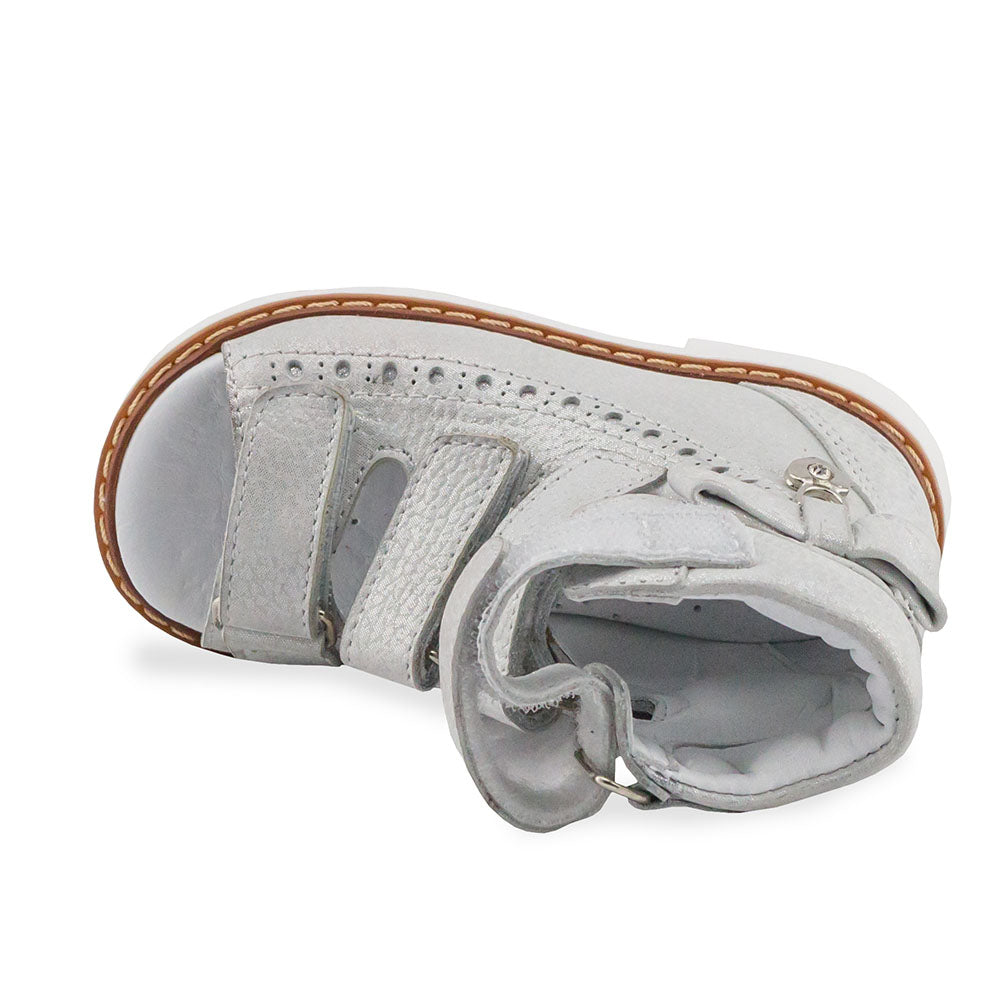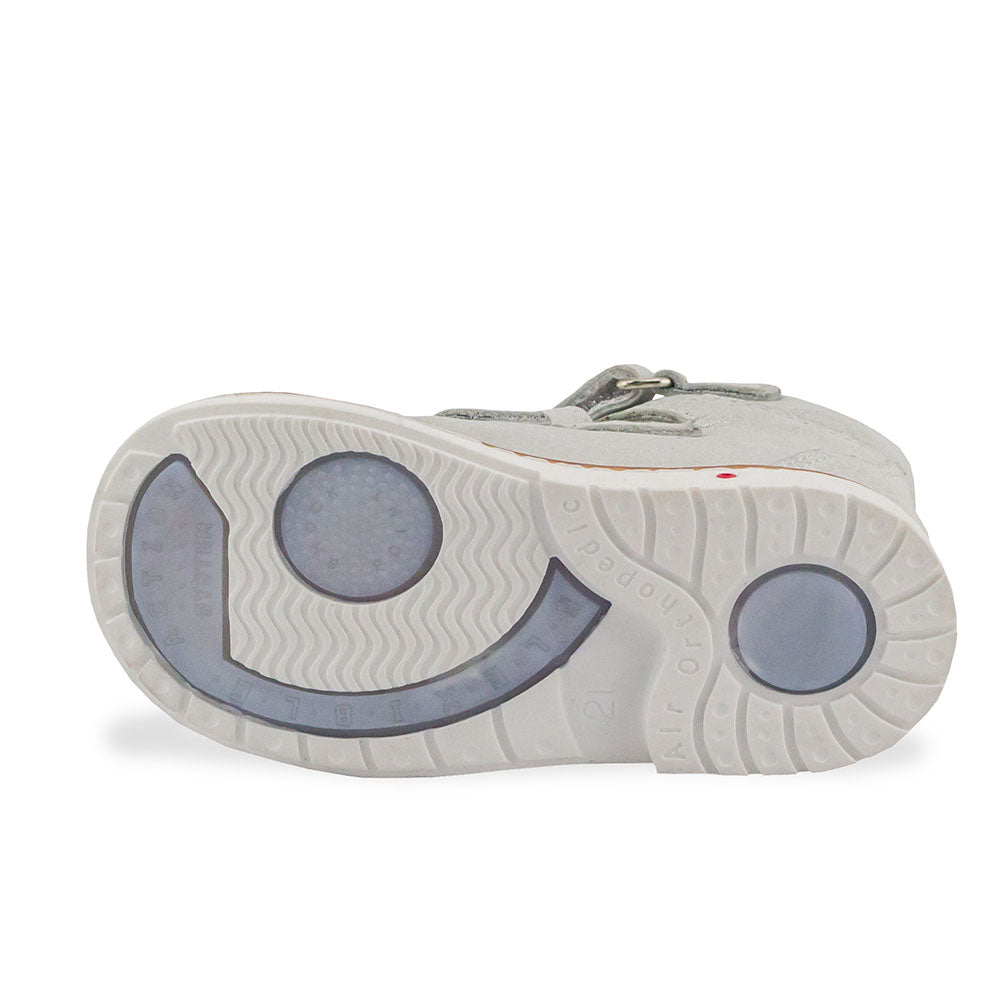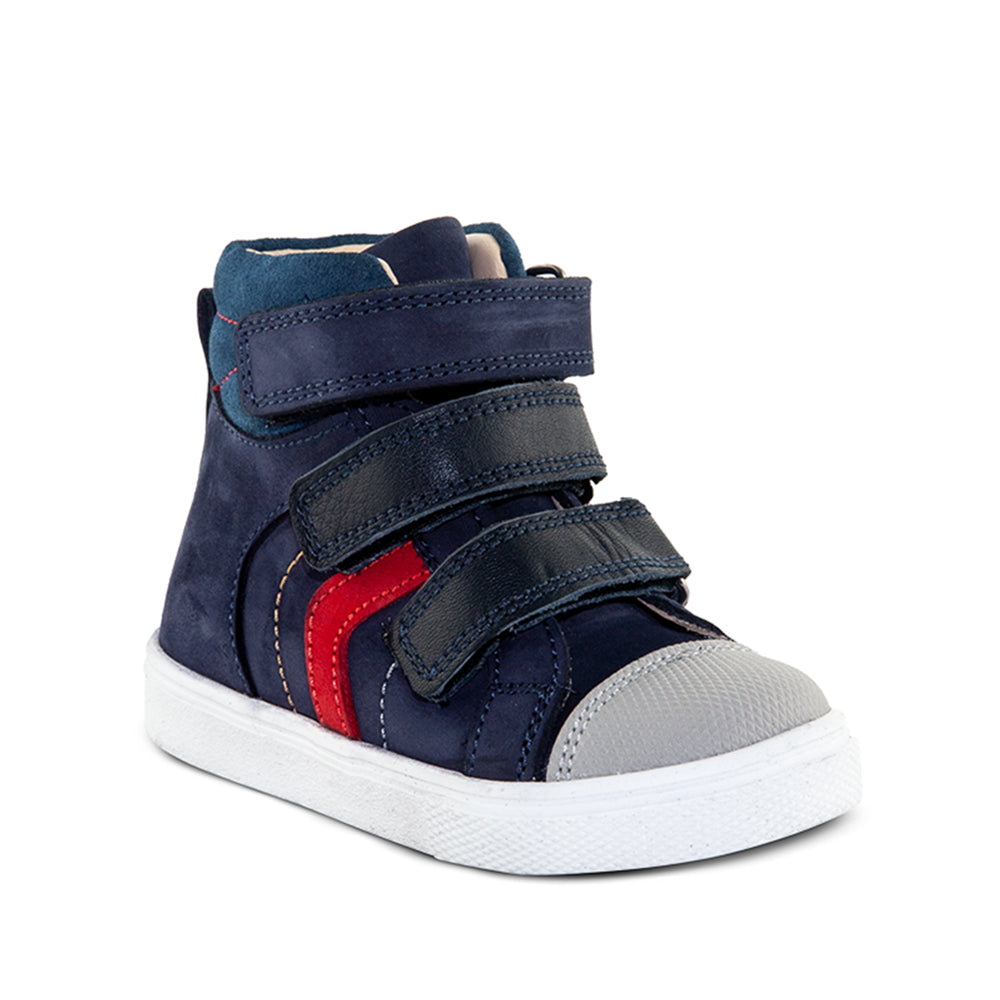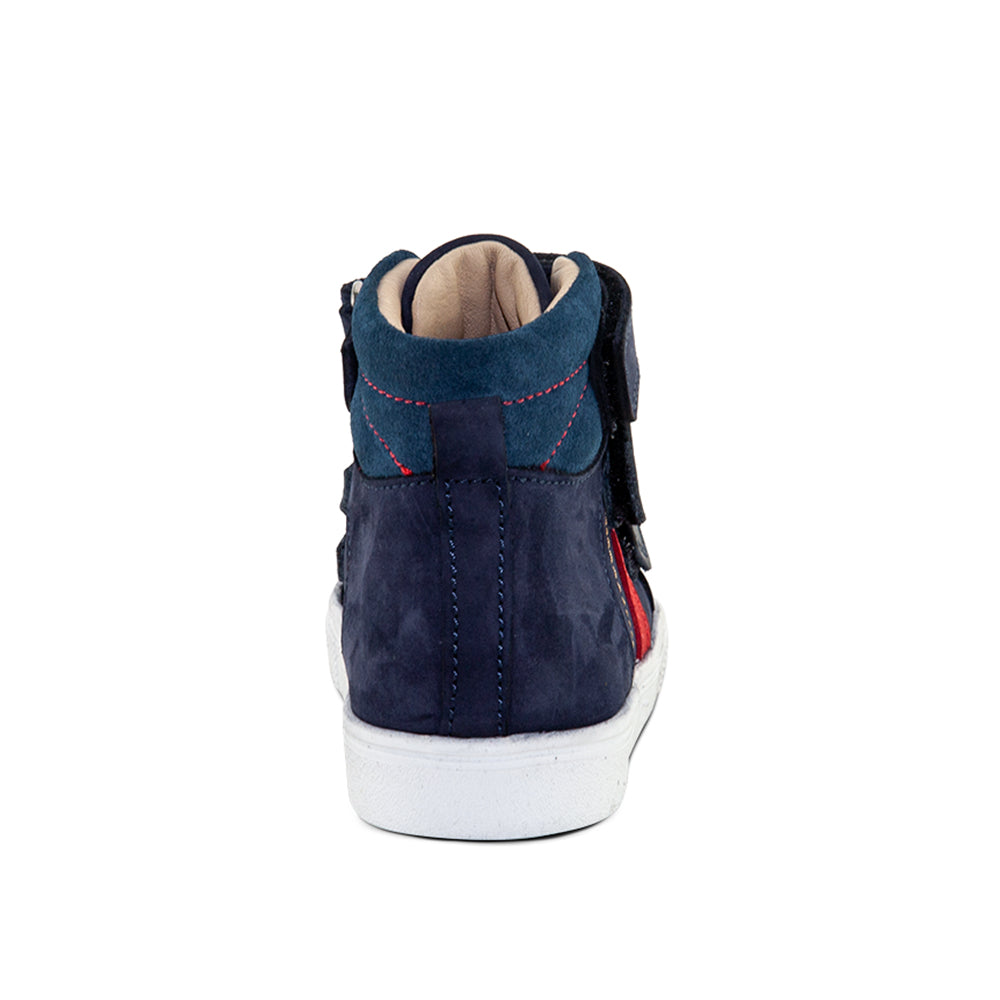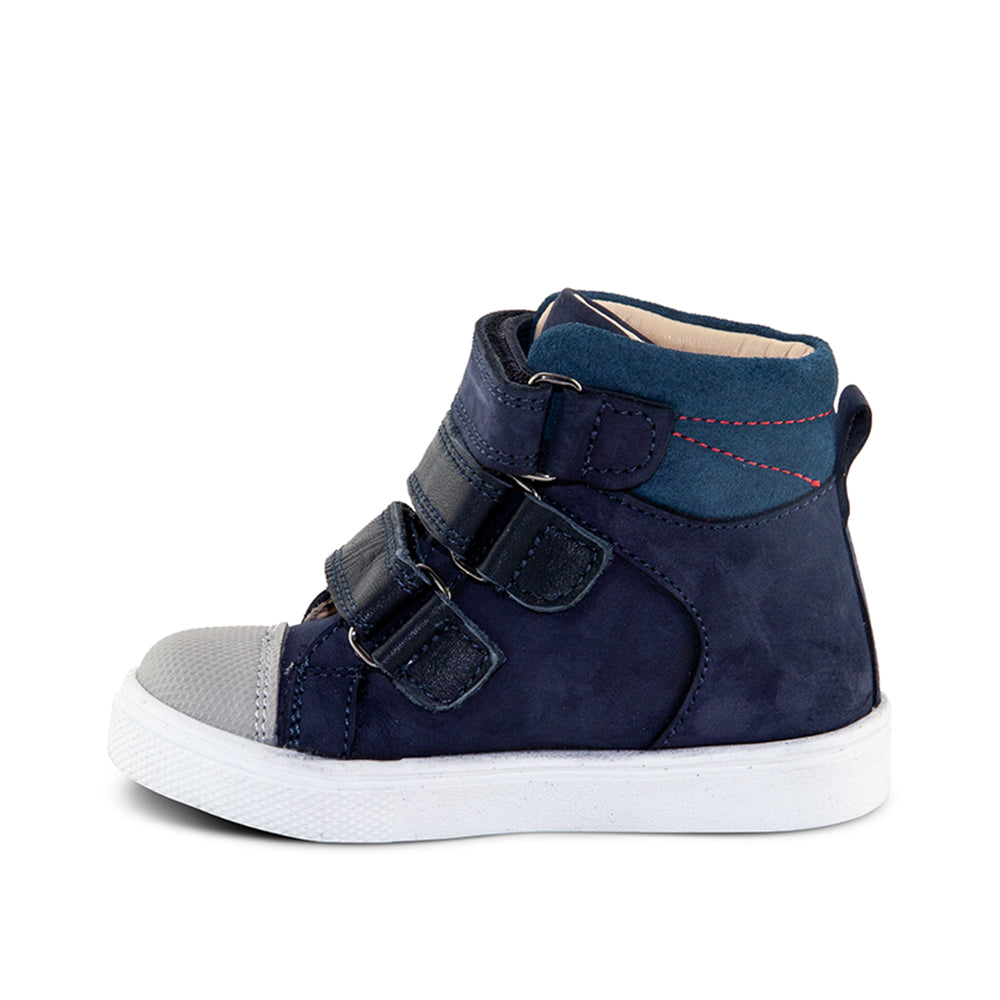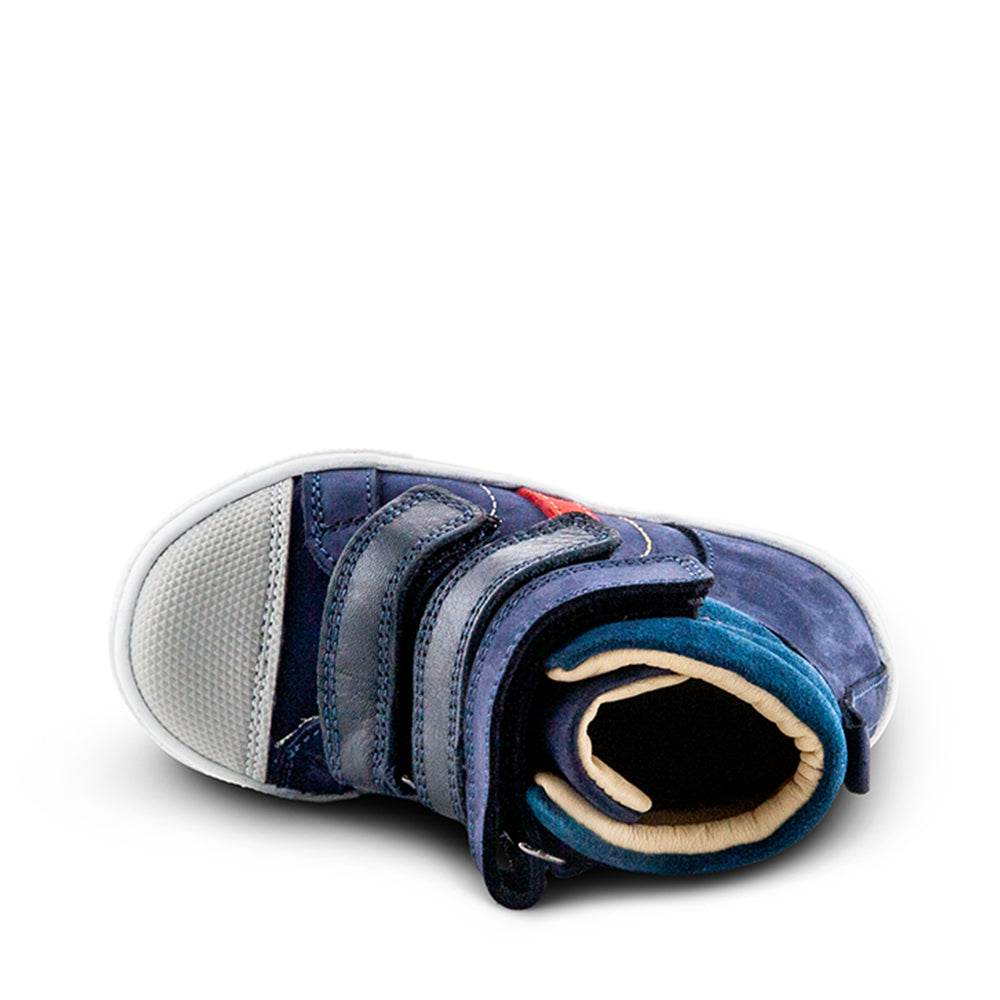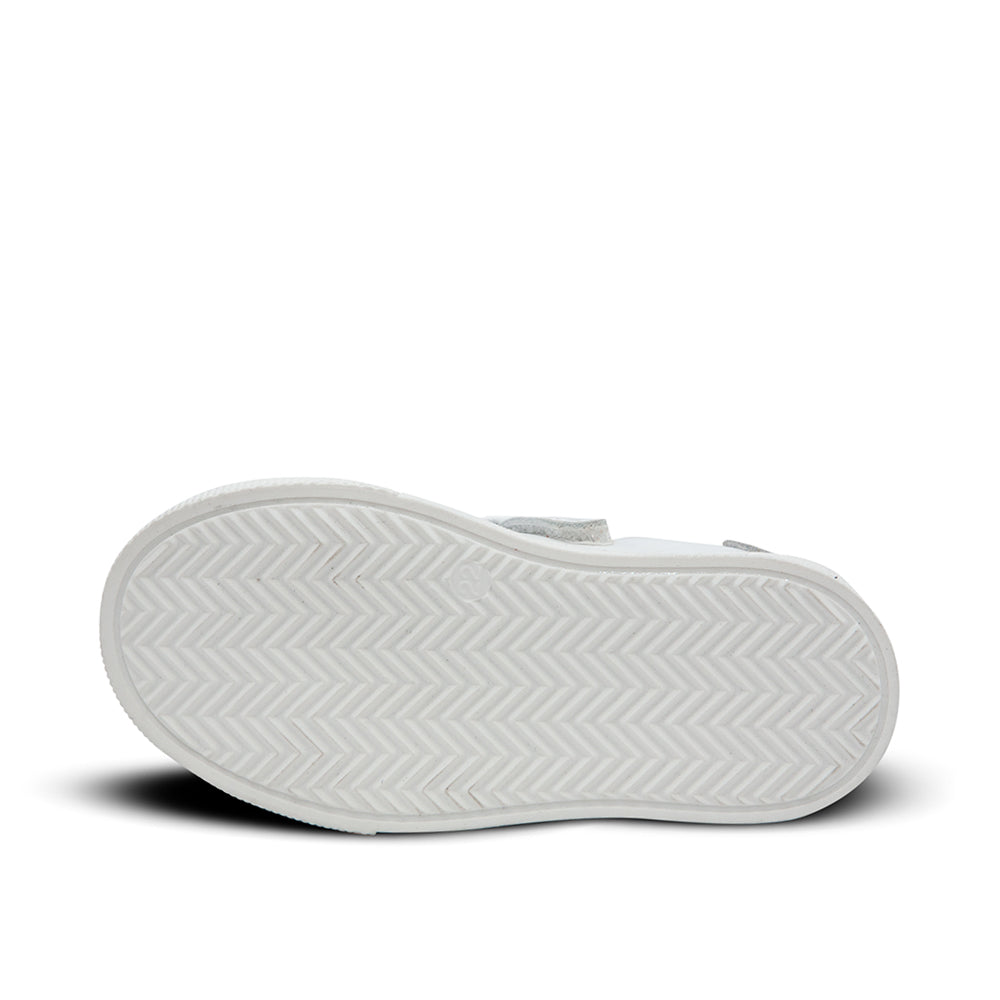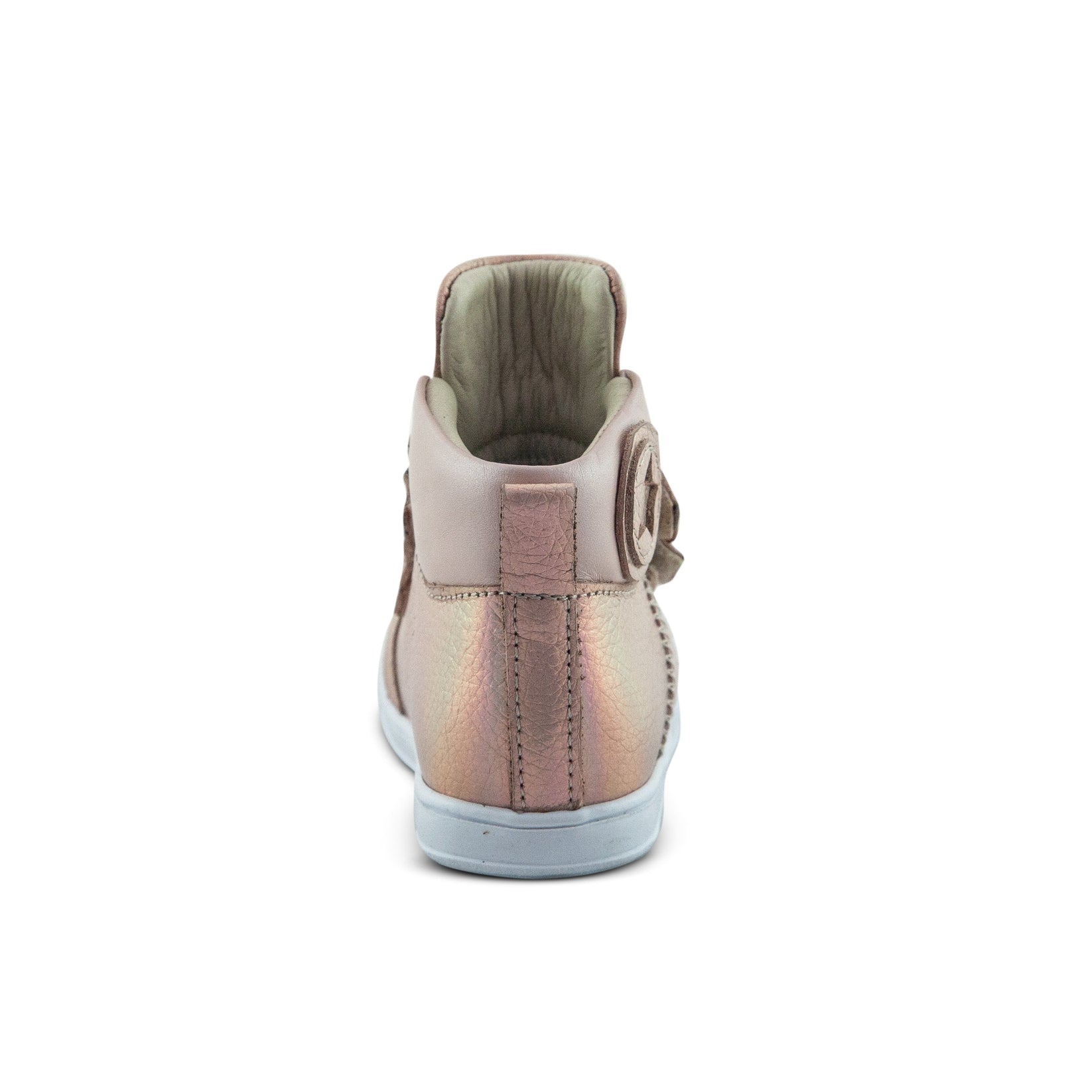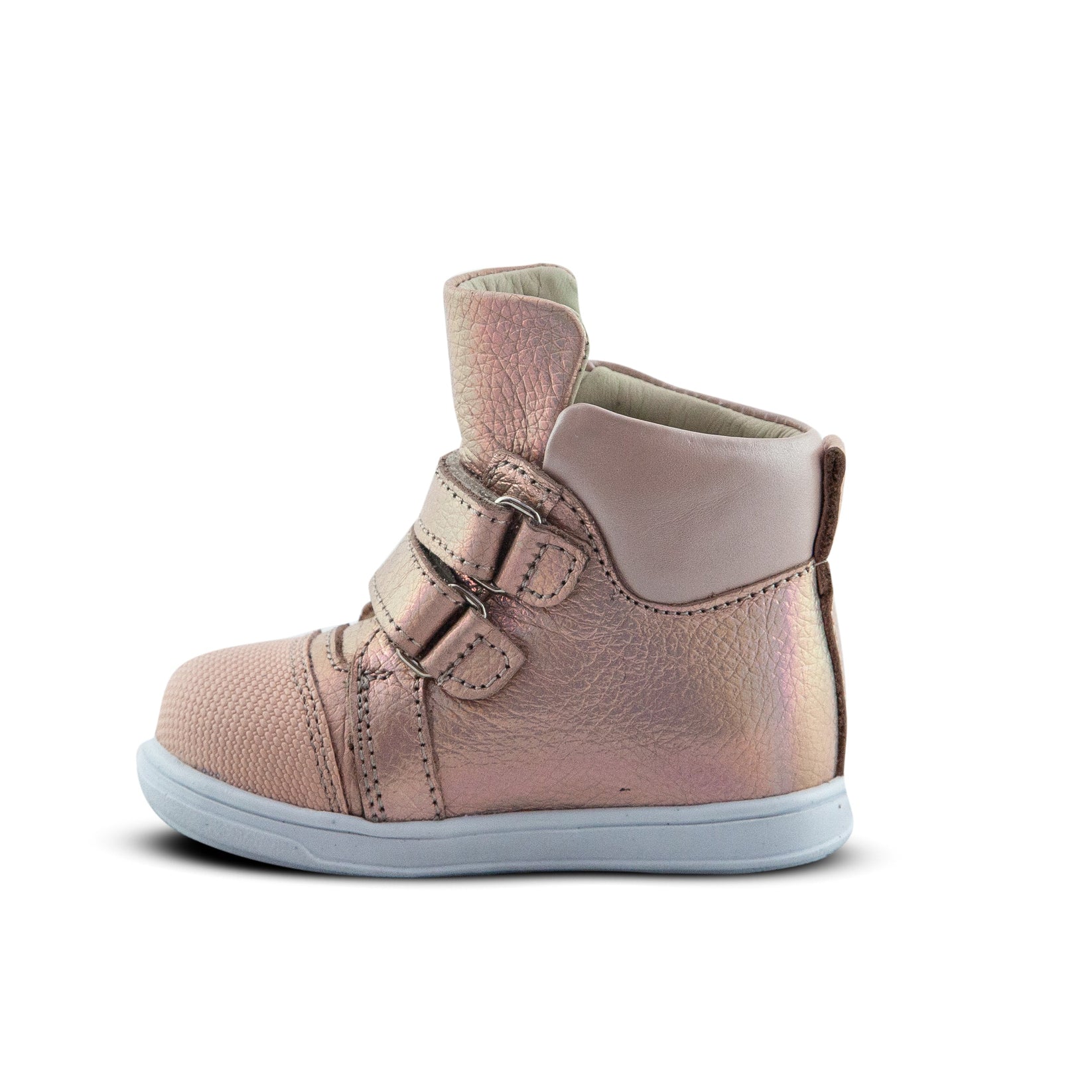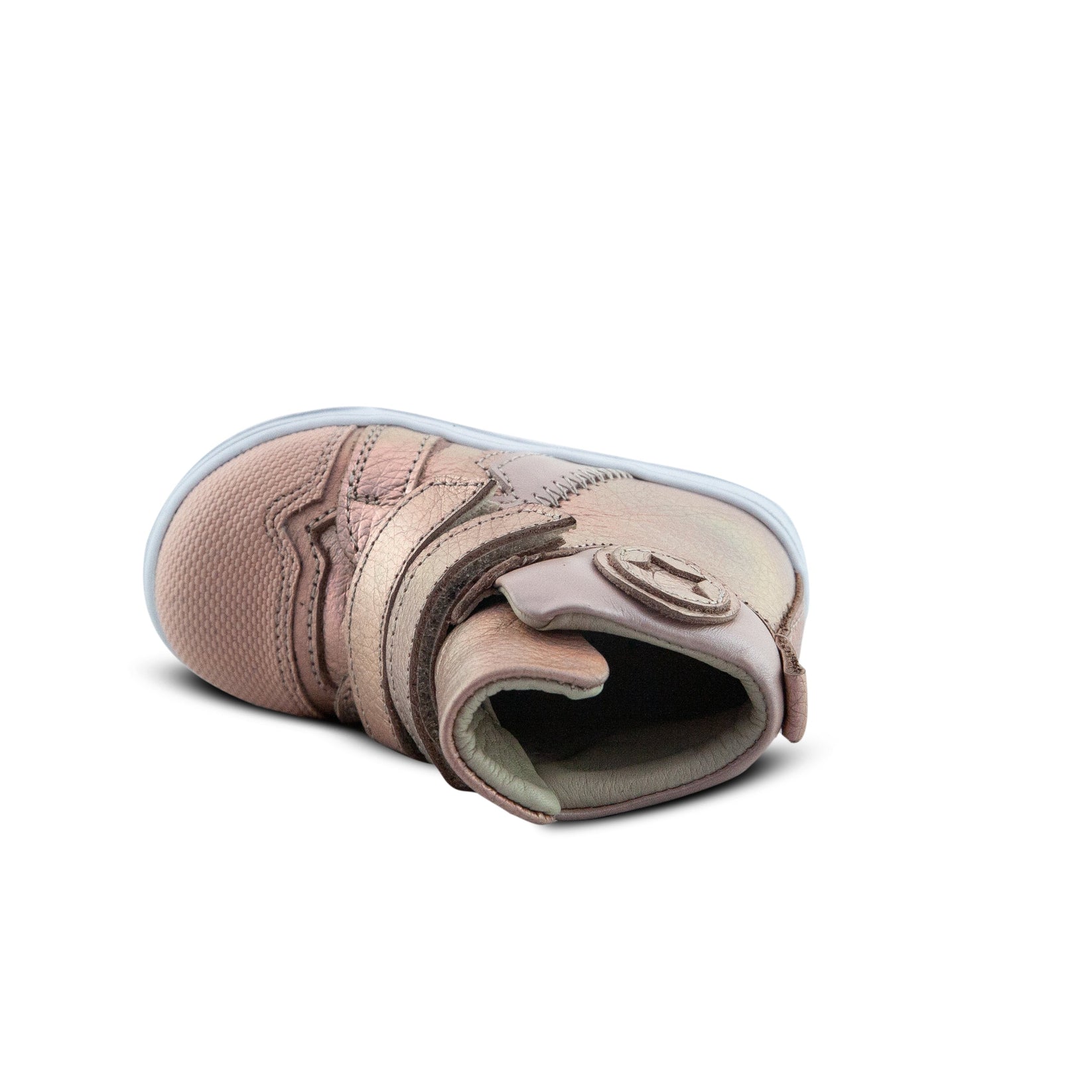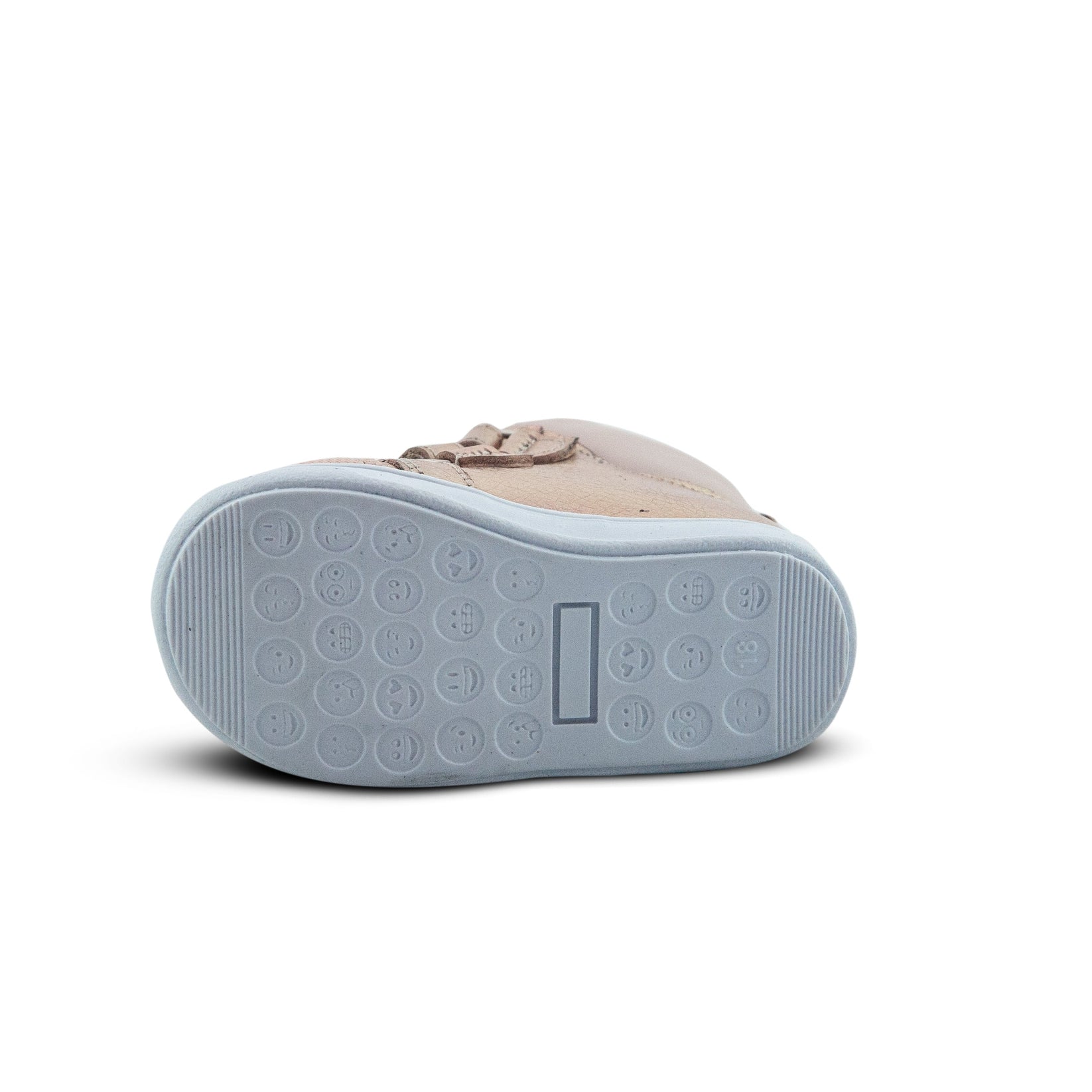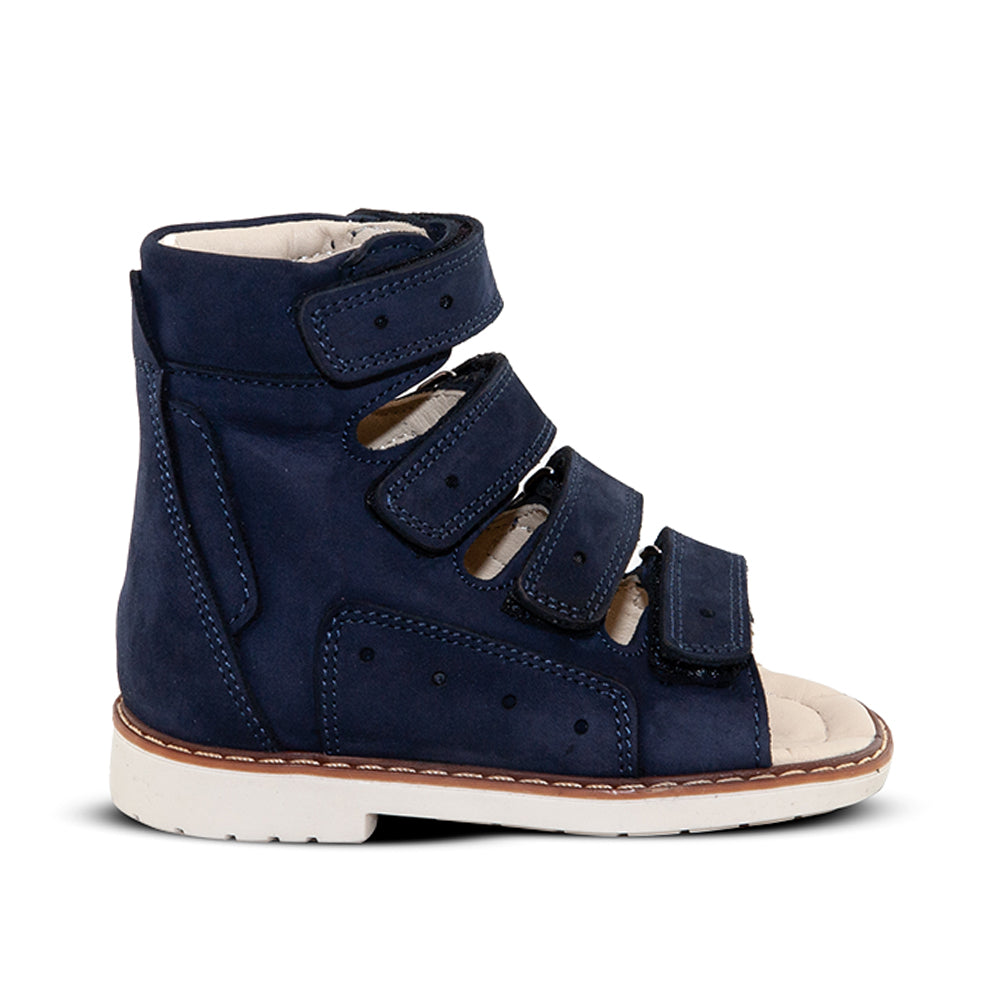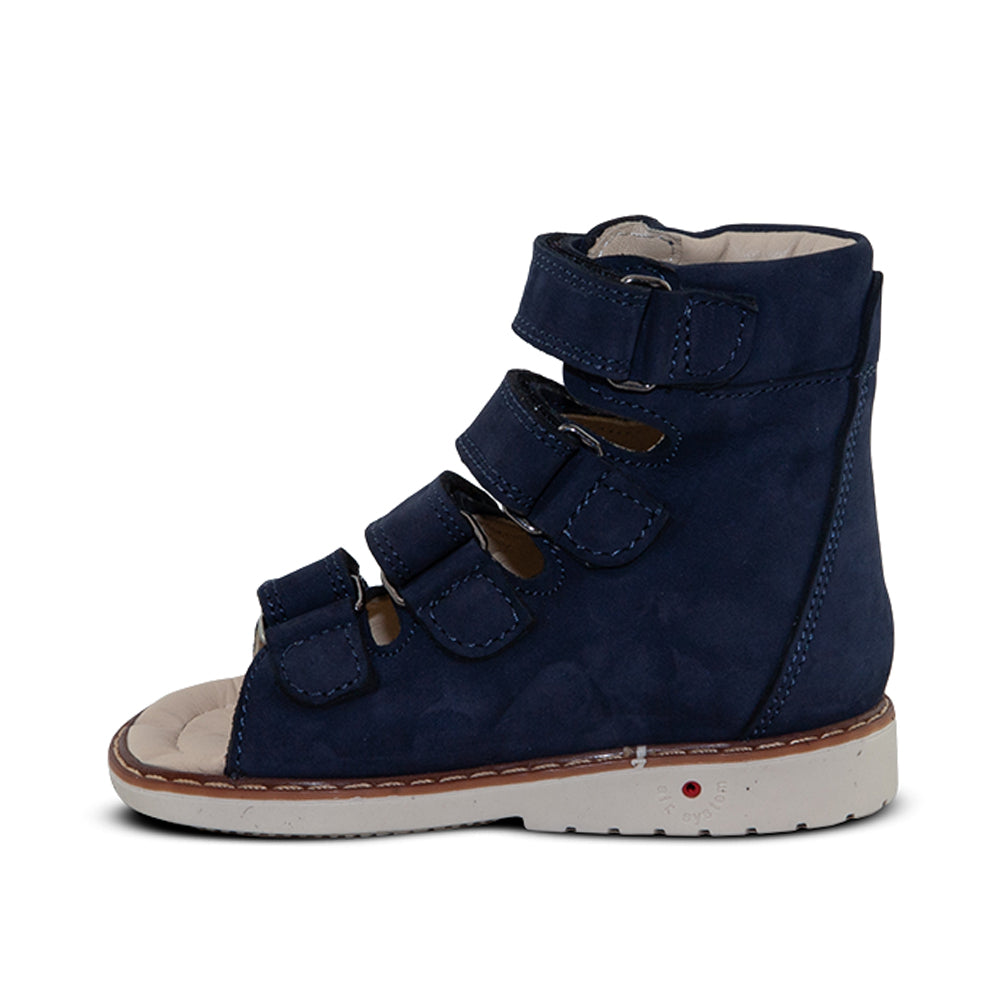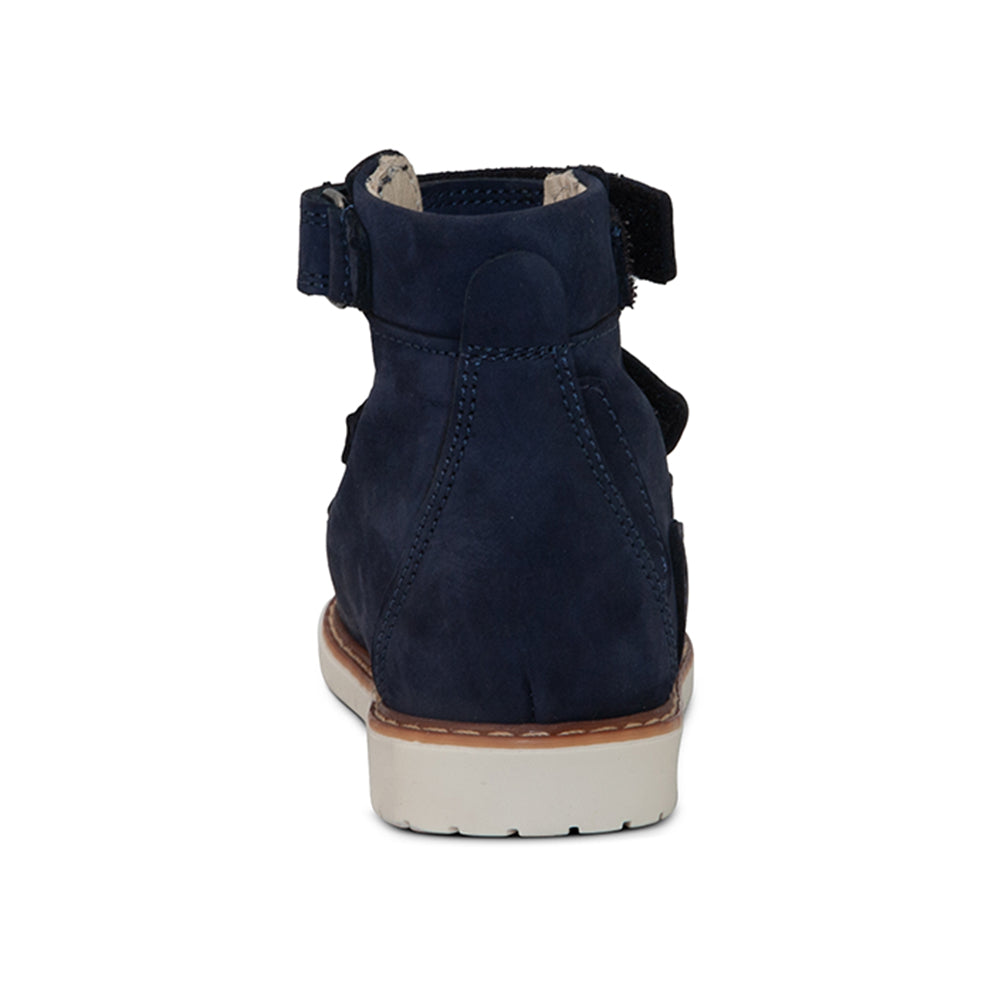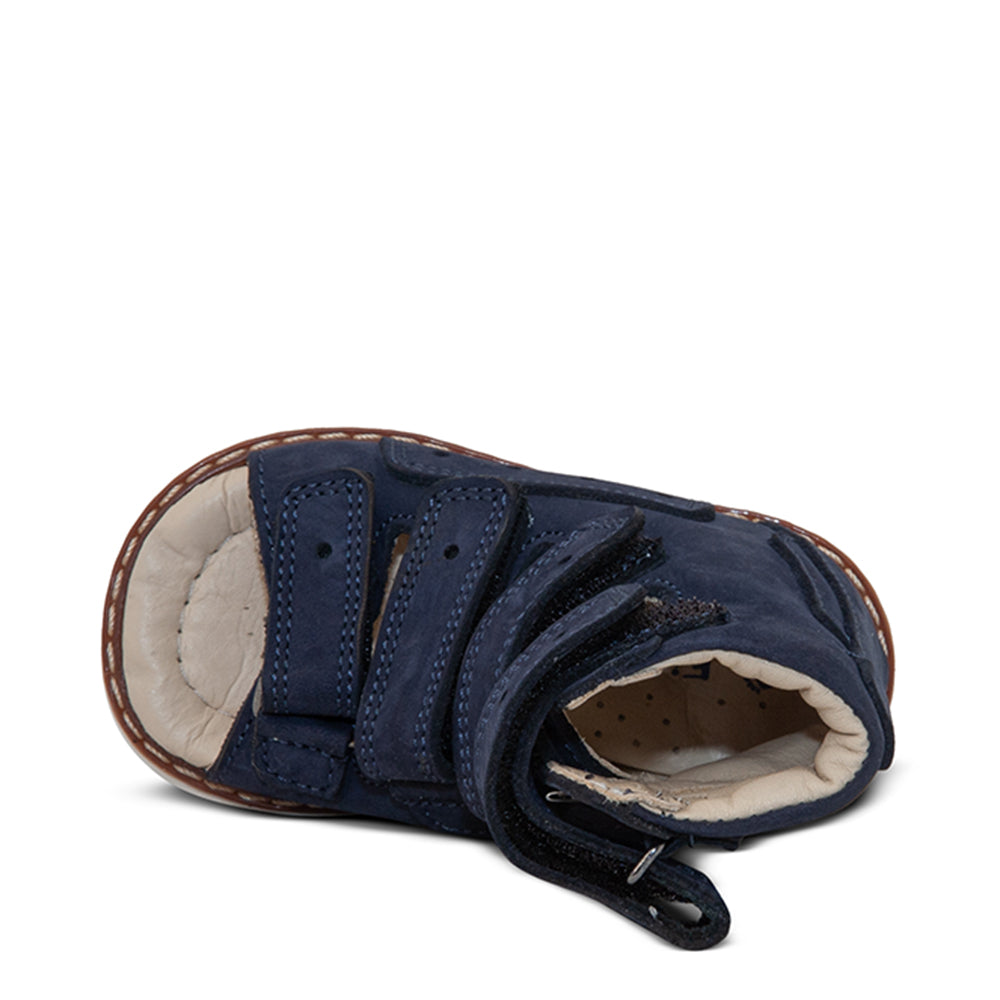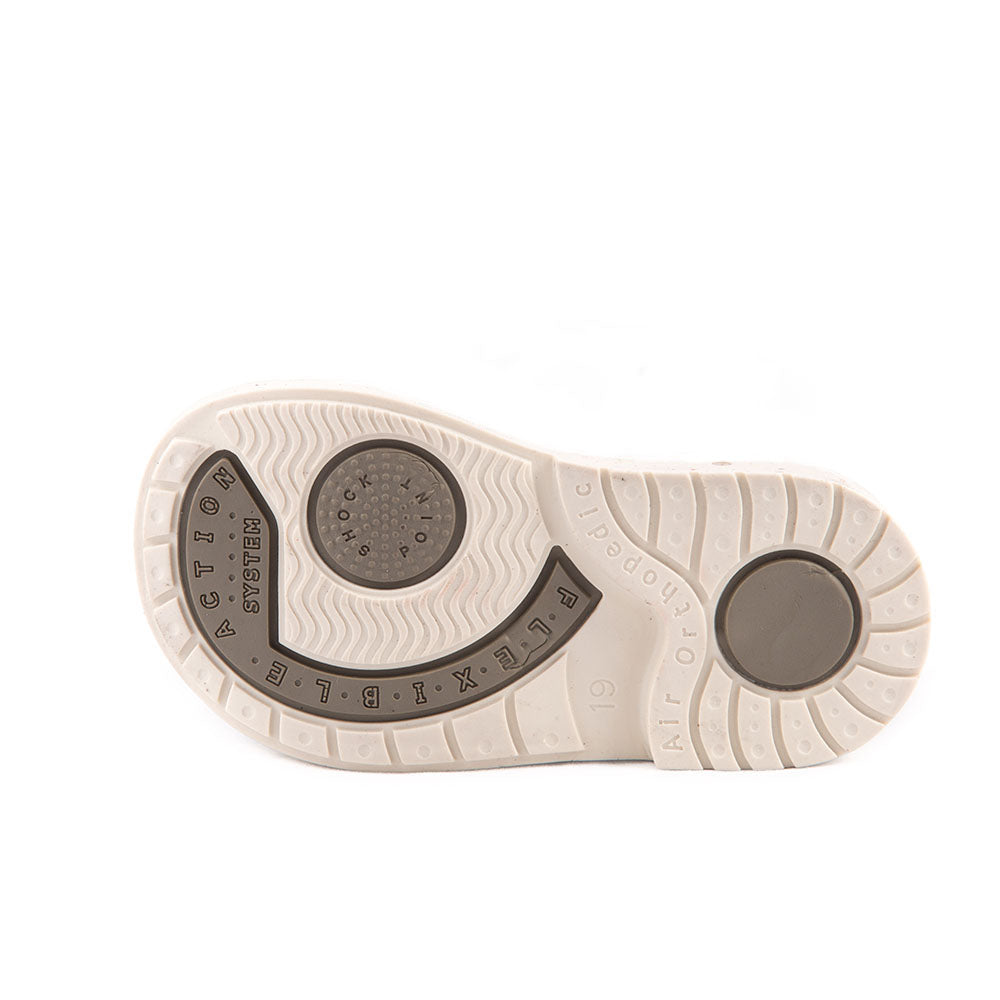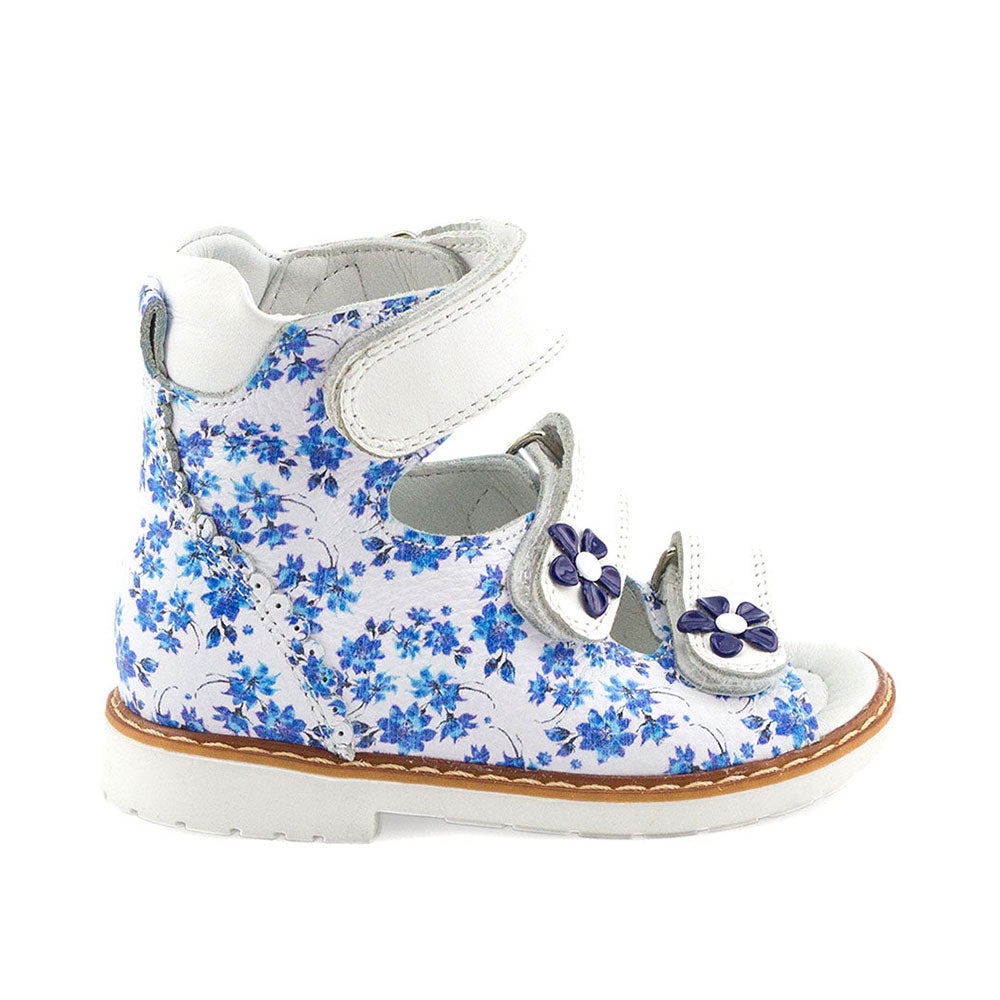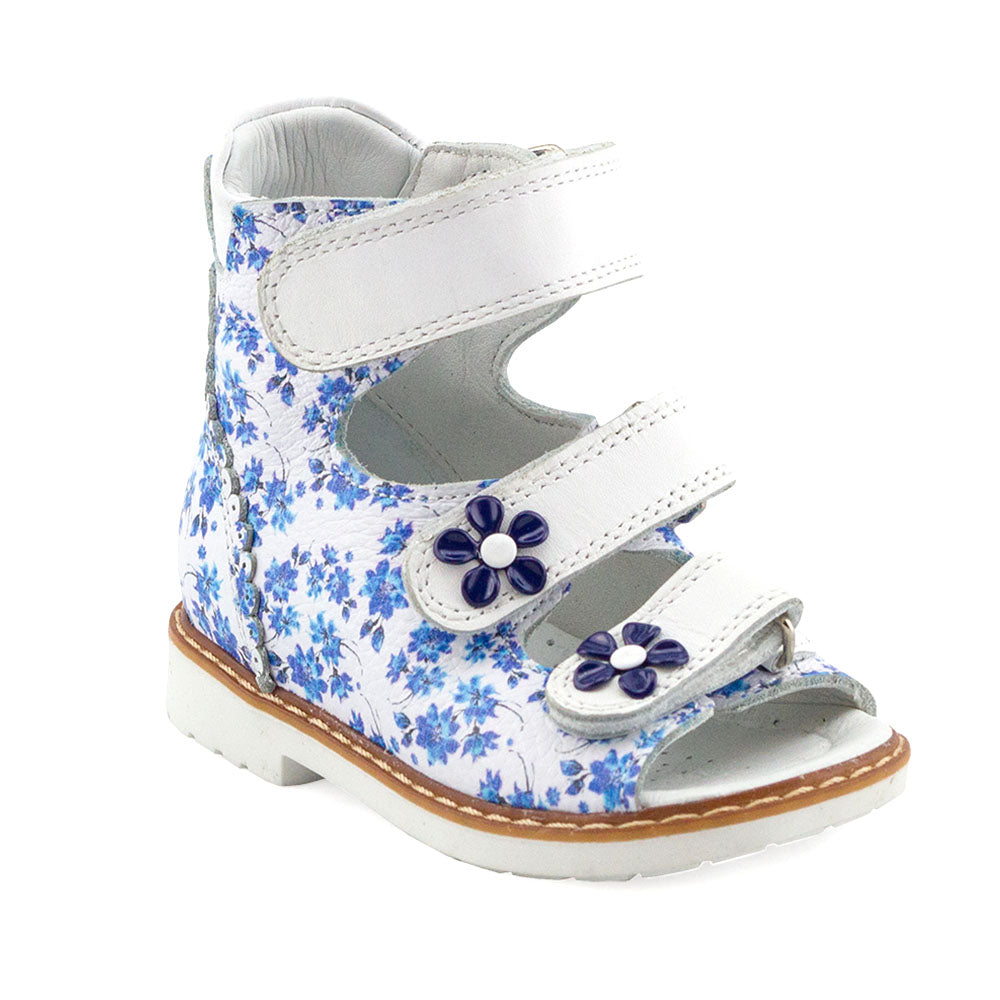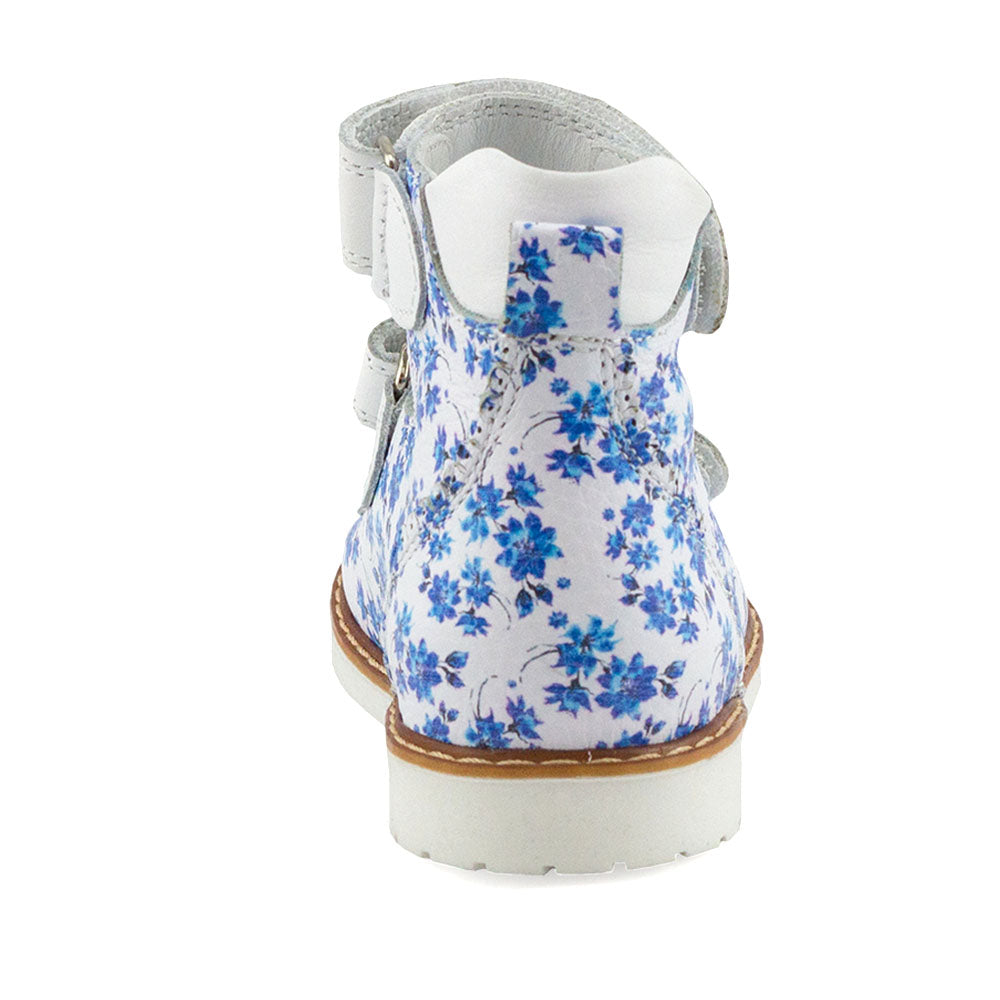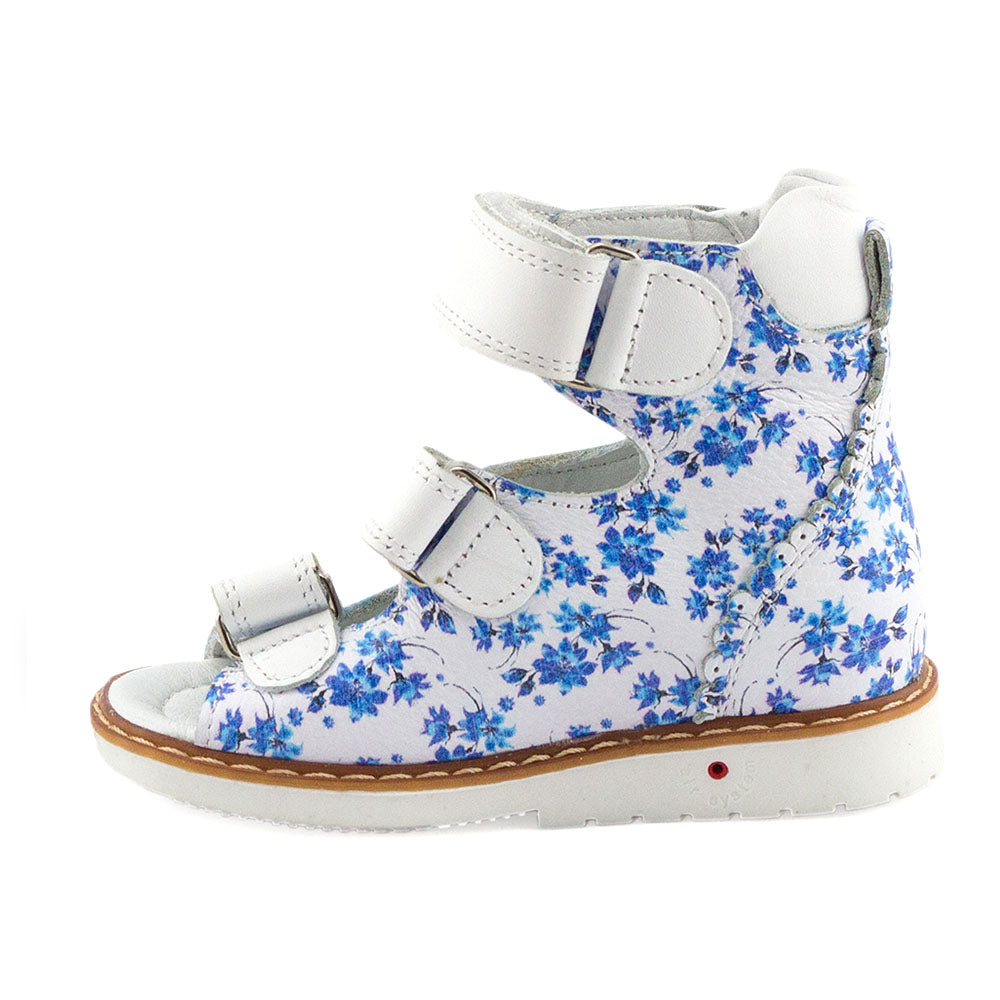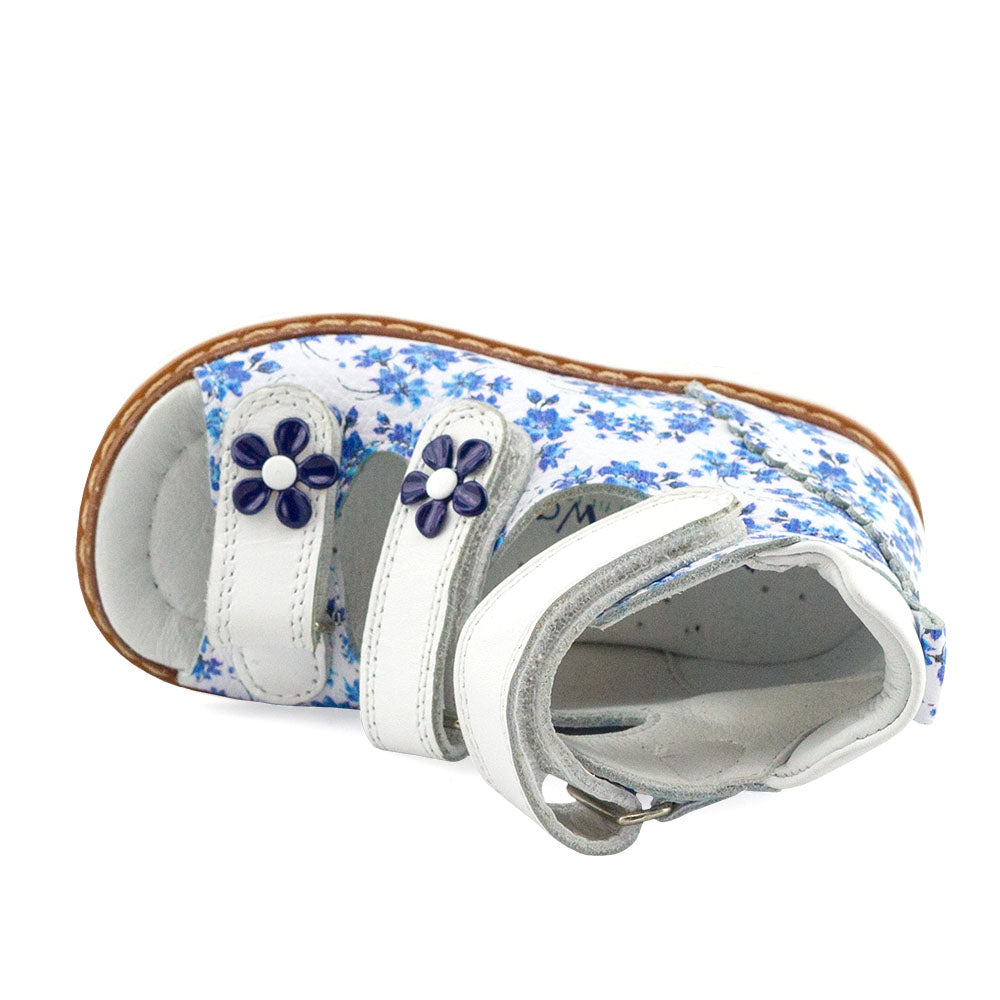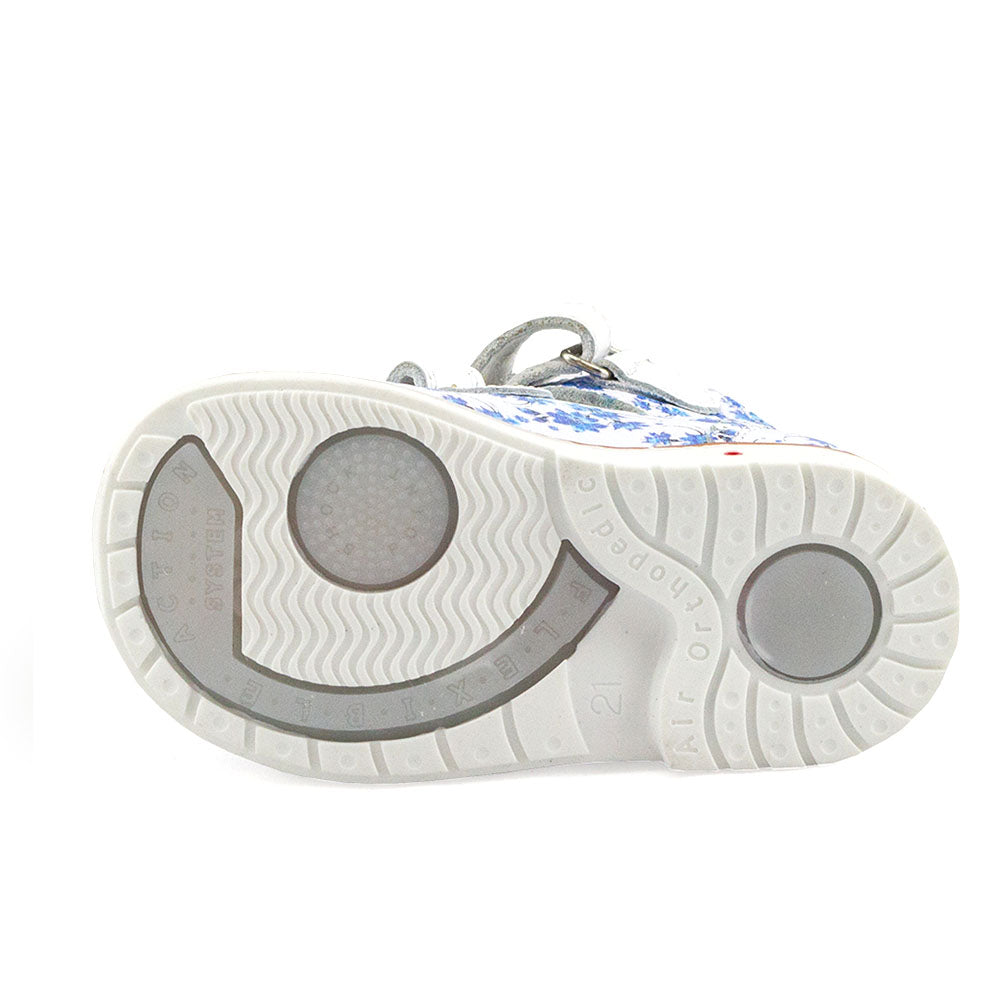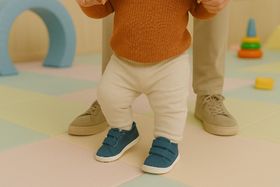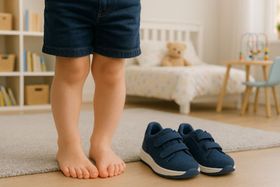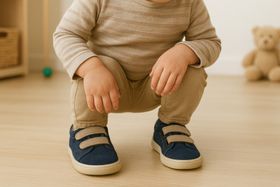5 Best Shoes for Cruising Babies: For Stability & Support
Is your little one pulling up and taking those first wobbly steps along the furniture? The right cruising shoes can make all the difference.
Updated July 21, 2025
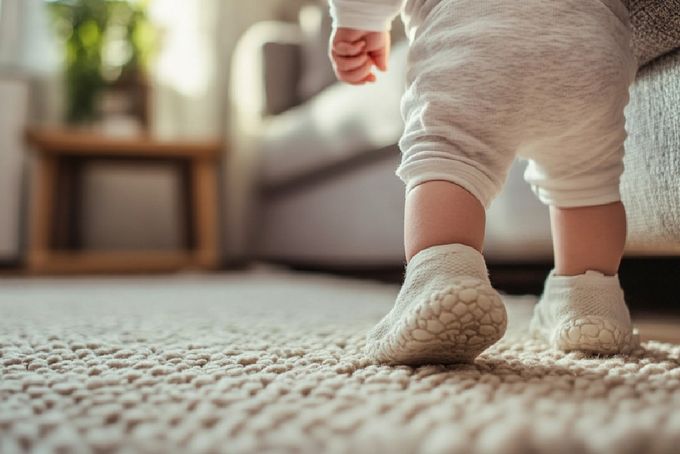
Your baby is starting to cruise, holding onto furniture and taking those adorable sideways steps. But with slippery floors, unstable footing, and tiny toes that need protection, finding the right shoes feels overwhelming.
The wrong shoes can actually do more harm than good, making it harder for your baby to balance and develop strong, stable steps. Hard soles, poor grip, and tight fits can lead to discomfort and even delay walking confidence.
In this guide, we’ll break down the best shoes for cruising babies, focusing on flexibility, grip, and foot development.
» Browse our collection of cruising baby shoes
Our Picks for the 5 Best Early Walker Shoes
What Is the “Cruising” Stage in a Baby’s Development?
The cruising stage occurs when babies "cruise" sideways in an upright position while holding onto objects, occurring in the course of 8 to 12 weeks of age. Think of it as the baby moving along the edges of the sofa, coffee table, or anything sturdy they can grip.
They also take forward steps while holding a caregiver's hands, and hold objects to pull up to a vertical position.
During all of these actions, the baby needs help in keeping an upright posture. The caregiver or furniture makes up for the lack of balance control and leg power that kids lack in the initial walking stages.
» Read our complete guide on buying toddler shoes
5 Best Shoes for Cruising Babies
What Features Are Best in a Baby Cruising Shoe?
Thin and Flexible Sole
Body positioning awareness is one of the most important developmental traits that help babies move around. To help your baby improve it, look for shoes with thin soles. This feature improves sensory feedback, which is necessary for your little one's posture and balance.
Flexible soles also boost gripping sense, which in turn strengthens the small muscles in your baby's feet that are essential for arch development.
» Explore the best kids' arch support shoes that encourage healthy growth
Lightweight Material
Shoes made of lightweight materials help your kid's feet move freely while they are growing and improve their stability. This feature is important both for indoor and outdoor wear, as it reduces the chance of calf and foot cramps.
It also makes it easier for kids to shift their weight from one foot to the other when they are learning to walk, which would have been challenging if the shoes were heavy.
Cushioned Heel Counter
A cushioned heel counter supports your kid's feet while preventing excessive pronation, supination, and associated foot pain and discomfort. Children continuously adjust their weight with impact when cruising, so the heel counter cushioning is going to decrease the impact on their feet.
Non-Slippery Outsoles
Children's feet need exactly the appropriate amount of support to avoid falls caused by slippery surfaces, and non-slip outsoles are perfect for it. You also don't want to get them rigid outsoles that restrict their movement.
When newborns start to cruise, the interior surfaces are excessively smooth for them. That's why a rough, rigged, or textured outsole may provide the grip to minimize falls while helping them move freely outdoors.
» Check out a list of expert-recommended shoes for toddlers
How Cruising Shoes Help With Foot Conditions
- Flat Feet: Flat feet are common when newborns first begin to cruise, and the cruising shoes that come with a flexible sole. Pairs with wide toe boxes also help develop their arch naturally when they curl their toes in to take a step and maintain grip repeatedly.
- Hypermobility: Stability is the biggest problem in children with hypermobility; to address this, cruising shoes that have a narrower toe box and a more rigid sole can fit snugly to preserve balance and grip.
- Delayed Walking: Cruising shoes help delayed walkers with their soft, flexible, sole that encourages sensory feedback—just like barefoot walking. Some pairs also offer non-slip soles that reduce falls and help them shift weight.
» Check out the best time for your baby to start wearing hard-soled shoes
3 Signs Your Baby Needs Cruising Shoes
Signs that your baby may need cruising shoes include the following:
Pulling Up to Stand: If your baby is using furniture, your hands, or other objects to pull themselves into a standing position, they are entering the cruising stage and may benefit from shoes that provide support and protection.
Sideways Movement: Babies who start moving sideways while holding onto furniture for balance are actively cruising. Shoes with flexible soles can help them maintain stability and confidence during these movements.
Age Milestone: Cruising typically begins between 7 and 13 months, depending on muscle development and individual pace. If your baby is within this age range and showing signs of mobility, it may be time to consider cruising shoes.
» Discover all the milestones your growing baby will reach
Give Your Cruising Baby the Best Start
Choosing the right shoes for your cruising baby isn’t just about style—it’s about support, stability, and confidence as they take their first steps toward independent walking. The best shoes will provide a flexible sole, a secure fit, and the right amount of grip to help them move safely.
Now that you know what to look for, it’s time to find the perfect pair! Whether you opt for soft-soled indoor shoes or something more durable for outdoor adventures, the right choice will keep your little explorer comfortable and supported every step of the way.
First Walkers offers a variety of orthopaedic sandals, sneakers, and shoes designed to provide quality support for kids, with models like the Johnny Rigel to support your baby's first steps.
Disclaimer: First Walkers' information is intended for educational and informational purposes related to toddler footwear and feet. We encourage you to consider individual circumstances and consult qualified orthopedists about specific conditions.

